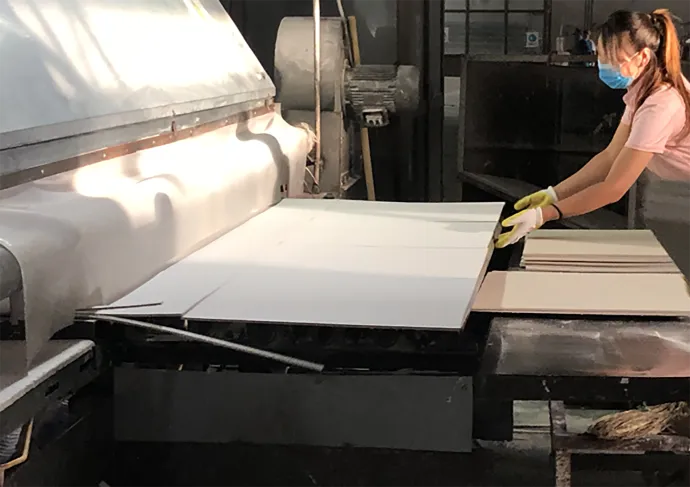- Afrikaans
- Albanian
- Amharic
- Arabic
- Armenian
- Azerbaijani
- Basque
- Belarusian
- Bengali
- Bosnian
- Bulgarian
- Catalan
- Cebuano
- Corsican
- Croatian
- Czech
- Danish
- Dutch
- English
- Esperanto
- Estonian
- French
- German
- Greek
- Hindi
- Indonesian
- irish
- Italian
- Japanese
- Korean
- Lao
- Malay
- Myanmar
- Norwegian
- Norwegian
- Polish
- Portuguese
- Romanian
- Russian
- Serbian
- Spanish
- Swedish
- Thai
- Turkish
- Ukrainian
- Uzbek
- Vietnamese
nov. . 05, 2024 22:26 Back to list
Steps for Installing a Ceiling Access Panel in Your Home
How to Install a Ceiling Access Panel
Installing a ceiling access panel can be a straightforward yet rewarding DIY task that enhances the functionality of your home by providing easy access to plumbing or electrical systems above your ceiling. Whether you're looking to facilitate maintenance work or install insulation, having a ceiling access panel is beneficial. In this article, we will guide you through the steps of installing a ceiling access panel effectively and safely.
Tools and Materials Required
Before starting the installation process, it’s important to gather all the necessary tools and materials. Here’s what you’ll need
- Ceiling access panel kit (appropriate size) - Measuring tape - Pencil or chalk - Stud finder - Drywall saw or utility knife - Level - Screwdriver - Safety goggles - Dust mask
Step-by-Step Installation Guide
1. Select the Location The first step in installing a ceiling access panel is choosing the right location. Ideally, this should be where maintenance tasks or access to systems above the ceiling are most needed. Make sure to avoid areas with heavy fixtures or where plumbing or electrical systems are not accessible. Use a stud finder to determine where the ceiling joists are located, ensuring that there's sufficient space within the ceiling cavity.
2. Measure and Mark Once you have determined the location, use your measuring tape to ensure that the panel will fit properly. Mark the dimensions of the panel on the ceiling using a pencil or chalk. It’s crucial to double-check your measurements to avoid mistakes.
how to install a ceiling access panel

3. Cut the Opening With the outline marked, it’s time to cut into the ceiling. Using a drywall saw or utility knife, carefully cut along the marked lines. Be cautious of any electrical wiring or plumbing that may be present in the area. If you do encounter any obstacles, reassess the position of the access panel before proceeding. Wear safety goggles and a dust mask to protect yourself from dust and debris.
4. Prepare the Access Panel Before installing the access panel, prepare it by removing any protective coverings or packaging. Most access panels come with pre-drilled holes for screws. This feature allows for a straightforward installation process.
5. Install the Access Panel Frame Insert the access panel frame into the opening you have cut. Make sure it is level; you can use a level tool to ensure accuracy. If the frame includes any flanges or clips for attachment, press them into the drywall as instructed by the manufacturer.
6. Secure the Panel Using your screwdriver, secure the access panel frame to the ceiling by driving screws into the pre-drilled holes. Make sure the panel is screwed in tightly, ensuring there are no gaps between the panel and the ceiling. This step not only secures the panel but also prevents any sagging over time.
7. Install the Access Door Depending on the style of your access panel, it may come with a door that you will need to attach after the frame installation. Align the door with the frame and secure it as per the manufacturer’s instructions. Test the door to ensure it opens and closes smoothly.
8. Finishing Touches After successfully installing the access panel, you may want to paint or finish the area around the panel to match the surrounding ceiling. This ensures that the panel blends seamlessly with the rest of your ceiling.
Conclusion
Installing a ceiling access panel can save you time and money by allowing easy access to essential systems in your home. Following these steps ensures a successful installation that adds functionality to your space. Always remember to prioritize safety, and consult a professional if you are unsure during any part of the installation process. With a little patience and attention to detail, you’ll have a functional access panel ready for use in no time.
-
Transform Interiors with PVC Gypsum Ceiling: A Stylish, Durable, and Moisture-Resistant SolutionNewsMay.19,2025
-
The Smart Interior Upgrade: Discover the Durability and Versatility of Gypsum Ceiling Access Panel SolutionsNewsMay.19,2025
-
The Smart Choice for Interior Design: Discover the Value of PVC Gypsum Ceiling SolutionsNewsMay.19,2025
-
Mineral Fiber Ceiling Tiles: The Smart Blend of Performance and AestheticsNewsMay.19,2025
-
Mineral Fiber Ceiling Tiles: The Superior Choice Over Gypsum for Sound and Fire SafetyNewsMay.19,2025
-
Mineral Fiber Ceiling Tiles: Eco-Friendly Strength and Style for Every CeilingNewsMay.19,2025







